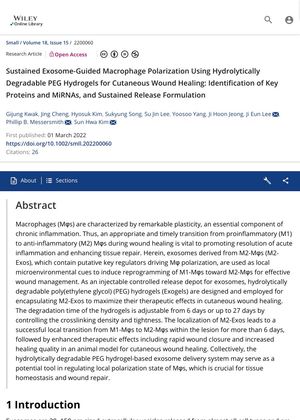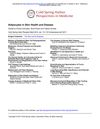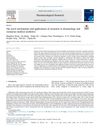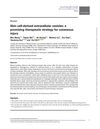Sustained Exosome-Guided Macrophage Polarization Using Hydrolytically Degradable PEG Hydrogels for Cutaneous Wound Healing: Identification of Key Proteins and miRNAs, and Sustained Release Formulation
March 2022
in “
Small
”
exosomes M2-derived exosomes M1 macrophages M2 macrophages hydrogel system wound healing protein signatures miRNA signatures proteomic sequencing genomic sequencing M2-Exo-loaded hydrogel inflammation proliferation cutaneous wound healing M2-Exos hydrogel protein markers miRNA markers proteomic analysis genomic analysis M2-Exo hydrogel healing

TLDR Hydrogel with M2-derived exosomes improves wound healing by slowly releasing exosomes that help reduce inflammation and promote tissue repair.
The study investigated the use of exosomes, specifically M2-derived exosomes (M2-Exos), in wound healing. M2-Exos can reprogram M1 macrophages to M2, aiding in the transition from inflammation to proliferation during wound healing. To overcome the rapid clearance of exosomes from the body, a hydrogel system was developed to encapsulate M2-Exos and control their release over 6 to 26 days. This system improved wound closure and healing quality in a mouse model by promoting the conversion of M1 to M2 macrophages at the wound site. The study also identified protein and miRNA signatures of M1- and M2-Exos through proteomic and genomic sequencing analysis. The researchers developed a novel M2-Exo-loaded hydrogel system for a sustained supply of a high dose of exosomes to promote the M1-to-M2 macrophage transition in the wound area. The study suggests that tailoring M-Exo release rates in hydrogel-based delivery applications offers a promising therapeutic strategy for various inflammation-related diseases.



